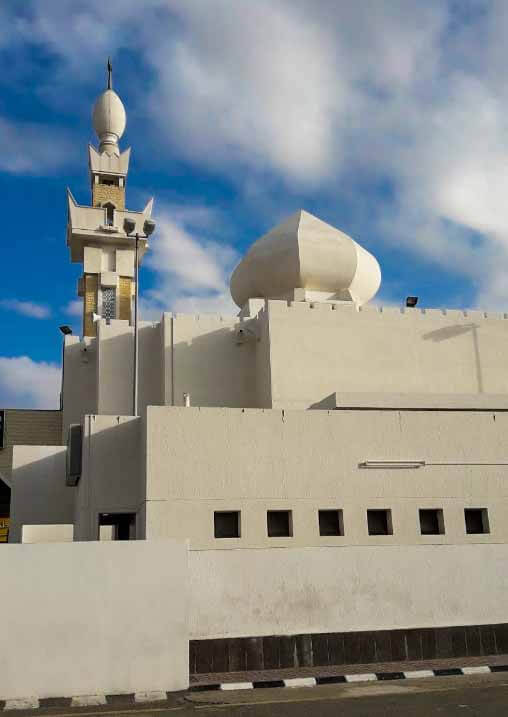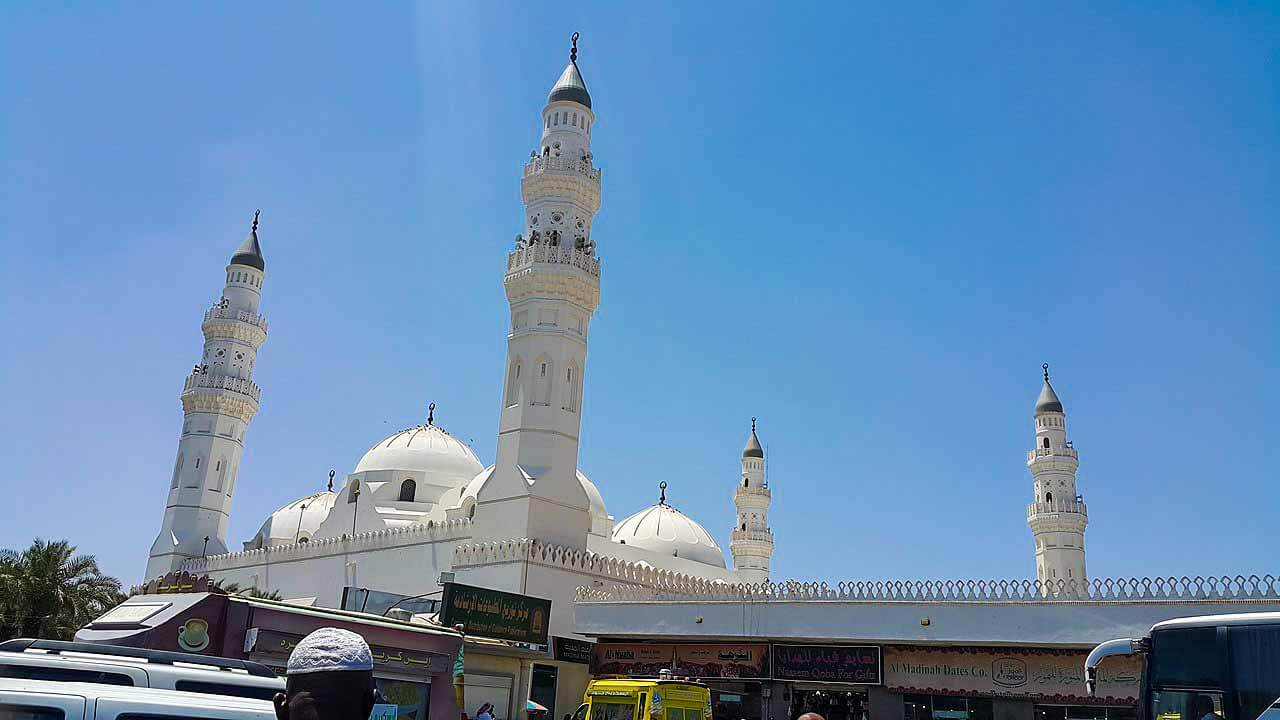Al Ju’ranah, Mecca Sharif – Saudi Arabia
Coordinates: 21.568766, 39.951543
The Battle of Hunayn was fought by the Hz. Prophet Muhammad ﷺ and his Sahabas against the Bedouin tribe of Hawazin and its subsection the Thaqif, in 630 CE, in the Hunayn valley, on the route from Mecca Sharif to At-Ta’if.
The battle ultimately ended in a decisive victory for the Muslims.
It is mentioned in Surat at-Tawbah of the Qur’an, and is one of the few battles mentioned by name in the Qur’an.
Background
The Hawazins had been long-standing enemies of Mecca Sharifns. They were located north-east of Mecca Sharif and their territory sat beside the trade route to Al-Hirah in Iraq.
The Hawazins were allied with the Thaqifs, a Hawazin subtribe which had settled in Ta’if, a town south-east of Mecca Sharif whose trade routes ran through Hawazin territory.
The alliance had engaged in several wars probably concerning trade routes between Ta’if and Mecca Sharif.
Given this history they saw Hz. Prophet Muhammad ﷺ as another powerful Quraishi leader who had come to lead his people.
They thought among themselves that a war with Muslims was imminent and that the once-persecuted minority of Muslims had gained the upper hand against their non-Muslim Arab enemies, and they may have wanted to take advantage of the likely chaos in Mecca Sharif after the Muslim takeover.
They thought that they were too mighty to admit or surrender to such a victory. So, they met Malik bin ‘Awf An-Nasri and made up their minds to proceed fighting against the Muslims.
Spy
The Hawazin and their allies, the Thaqif, began mobilizing their forces when they learned from spies that Hz. Prophet Muhammad ﷺ and his army had departed from Medina Sharif to begin an assault on Mecca Sharif.
The confederates apparently hoped to attack the Muslim army while it besieged Mecca Sharif.
Hz. Prophet Muhammad ﷺ, however, uncovered their intentions through his own spies in the camp of the Hawazin, and marched against the Hawazin just two weeks after the conquest of Mecca Sharif with a force of 12,000 men.
Only four weeks had elapsed since the Muslim forces had left Medina Sharif to conquer Mecca Sharif.
Course of the battle
On Wednesday night, the tenth of Shawwal, the Muslim army arrived at Hunain.
Malik bin ‘Awf, who had previously entered the valley by night, gave orders to his army of four thousand men to hide inside the valley and lurk for the Muslims on roads, entrances, and narrow hiding places.
His orders to his men were to hurl stones at Muslims whenever they caught sight of them and then to make one-man attacks against them.
When Muslims started camping, arrows began showering intensely at them. Their enemy’s battalions started a fierce attack against the Muslims, who had to retreat in disorder and utter confusion.
It is reported that only a few soldiers stayed behind and fought, including Hz. Ali bin Abu Talib رضي الله عنه, the standard bearer, Hz. Abbas bin Abdullah رضي الله عنه,Hz. Fadl ibn Abbas رضي الله عنه, Hz. Usamah رضي الله عنه, and Hz. Abu Sufyan bin al-Harith رضي الله عنه
Ibn Kathir writes that according to Ibn Ishaq, Hz. Jabir ibn Abdullah رضي الله عنه, who witnessed the battle, the Muslim army were panicked by a surprise attack from the enemy and many men fled the battlefield.
However, a group of Muhajirun stood firmly and defended the Hz. Prophet Muhammad ﷺ on the battlefield.
These men were Hz. Abu Bakr رضي الله عنه, Hz. Umar رضي الله عنه, Hz. Ali رضي الله عنه, Hz. Abbas ibn Abd al-Muttalib رضي الله عنه, Abu Hz. Sufyan ibn al-Harith رضي الله عنه, Hz. Fadl ibn Abbas رضي الله عنه, Hz. Rabi’ ibn al-Harith رضي الله عنه, Hz. Usama ibn Zayd رضي الله عنه and Hz. Ayman ibn Ubayd رضي الله عنه. Hz. Ayman ibn Ubayd رضي الله عنه was killed that day whilst defending Hz. Prophet Muhammad ﷺ
After the enemy was defeated. About seventy men of Thaqif alone were killed, and the Muslims captured all their riding camels, weapons and cattle.
Quranic Narration
The Quran verse 9:25 was also revealed in this event according to Muslim scholars:
Assuredly Allah did help you in many battle-fields and on the day of Hunain: Behold! your great numbers elated you, but they availed you naught: the land, for all that it is wide, did constrain you, and ye turned back in retreat.
But Allah did pour His calm on the Messenger and on the Believers, and sent down forces which ye saw not: He punished the Unbelievers; thus doth He reward those without Faith.
[Quran 9:25]
Aftermath
Because Malik ibn Awf al-Nasri had brought the families and flocks of the Hawazin along, the Muslims were able to capture huge spoils. 6,000 prisoners taken and 24,000 camels were captured.
Some Bedouins fled, and split into two groups. One group went back, resulting in the Battle of Autas, while the larger group found refuge at al-Ta’if, where Muhammad besieged them.
Masjid Ji’ranah
It is the region where our Prophet distributed the spoils of war after the Huneyn war.
A mosque was built here which was named Masjid Ji’ranah
It is situated between Taif and Makkah, closer to Makkah. It is about 20 kilometers away from Makkah.
Hz. Prophet Muhammad ﷺ stopped at that location on his way back from the campaign of Hunaian and entered Ihram from there.
Masjid Ji’ranah is a very beautiful mosque, which is also a meeqat for Umrah Pilgrims.
Ji’ranah masjid has modern amenities, lofty interiors and an elegant courtyard.



















